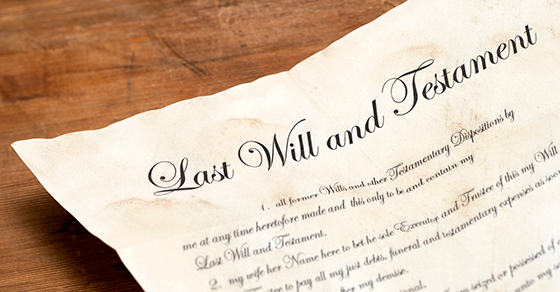If you have a life insurance policy, you may want to ensure that the benefits your family will receive after your death won’t be included in your estate. That way, the benefits won’t be subject to federal estate tax.
Current exemption amounts
For 2021, the federal estate and gift tax exemption is $11.7 million ($23.4 million for married couples). That’s generous by historical standards but in 2026, the exemption is set to fall to about $6 million ($12 million for married couples) after inflation adjustments — unless Congress changes the law.
In or out of your estate
Under the estate tax rules, insurance on your life will be included in your taxable estate if:
- Your estate is the beneficiary of the insurance proceeds, or
- You possessed certain economic ownership rights (called “incidents of ownership”) in the policy at your death (or within three years of your death).
It’s easy to avoid the first situation by making sure your estate isn’t designated as the policy beneficiary.
The second rule is more complicated. Just having someone else possess legal title to the policy won’t prevent the proceeds from being included in your estate if you keep “incidents of ownership.” Rights that, if held by you, will cause the proceeds to be taxed in your estate include:
- The right to change beneficiaries,
- The right to assign the policy (or revoke an assignment),
- The right to pledge the policy as security for a loan,
- The right to borrow against the policy’s cash surrender value, and
- The right to surrender or cancel the policy.
- Be aware that merely having any of the above powers will cause the proceeds to be taxed in your estate even if you never exercise them.
Buy-sell agreements and trusts
Life insurance obtained to fund a buy-sell agreement for a business interest under a “cross-purchase” arrangement won’t be taxed in your estate (unless the estate is the beneficiary).
An irrevocable life insurance trust (ILIT) is another effective vehicle that can be set up to keep life insurance proceeds from being taxed in the insured’s estate. Typically, the policy is transferred to the trust along with assets that can be used to pay future premiums. Alternatively, the trust buys the insurance with funds contributed by the insured. As long as the trust agreement doesn’t give the insured the ownership rights described above, the proceeds won’t be included in the insured’s estate.
The three-year rule
If you’re considering setting up a life insurance trust with a policy you own currently or simply assigning away your ownership rights in such a policy, consult with us to ensure you achieve your goals. Unless you live for at least three years after these steps are taken, the proceeds will be taxed in your estate. (For policies in which you never held incidents of ownership, the three-year rule doesn’t apply.)
Contact us if you have questions or would like assistance with estate planning and taxation.





